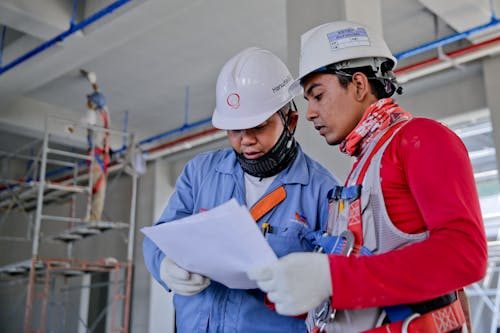
@ShahidNShah


Work environments, particularly in healthcare settings, can present unique hazards that demand more than just common sense. The integration of medical technology and healthcare IT in safety training and risk management is essential for minimizing risks, improving employee well-being, and optimizing healthcare operations. With the right tools and knowledge, healthcare facilities can reduce on-site hazards, improve compliance, and create a safer working environment for staff and patients.
Here’s how you can get started:
Building a Safety-First Culture with Healthcare IT and Professional Training
Creating a safety-first culture in healthcare is about more than enforcing rules. It involves active participation from all employees, supported by the right technology. Healthcare IT systems, like electronic health records (EHR) and safety management platforms, can help track incidents, monitor safety compliance, and identify risks. These systems foster a team-oriented approach by providing real-time updates on safety protocols and ensuring that all employees are aware of the latest training and safety guidelines.
The Role of Competent Safety Leaders in Healthcare Facilities
In healthcare, competent safety leaders are essential to the success of safety programs. By employing professionals with expertise in healthcare IT and medical technology, healthcare organizations can develop more effective safety protocols and remain compliant with regulations. Safety education programs, particularly those focusing on healthcare management and IT applications, offer comprehensive training for healthcare safety managers. These programs cover areas such as risk assessment, accident investigation, and emergency response, all of which can be enhanced through the integration of technology.
Moreover, professionals with qualifications, such as an occupational health and safety online degree, are an essential component in preparing healthcare workers and safety leaders to use these technologies effectively. By pursuing an online degree in occupational health and safety, professionals can gain the skills needed to assess risks, design safety protocols, and ensure compliance with health and safety regulations. The knowledge from such programs allows safety leaders to implement technology-based solutions, like automated safety monitoring and incident tracking, which can significantly enhance safety outcomes in healthcare facilities.
Emergency Preparedness and the Role of Medical Technology
Emergencies in healthcare facilities, whether from equipment malfunctions, medical emergencies, or fire hazards, can escalate quickly. However, with the right medical technology, response times can be reduced, and patient outcomes can be improved. For instance, medical devices connected to healthcare IT systems can automatically trigger alerts in the event of equipment failure, allowing staff to respond quickly. Additionally, digital emergency response protocols can streamline communication, helping staff to coordinate their actions efficiently.
On-the-job training in Healthcare IT and Safety Compliance
While classroom education provides foundational knowledge, on-the-job training allows healthcare workers to apply what they’ve learned in real-time situations. Training on how to use healthcare IT tools, such as patient monitoring systems or safety management platforms, ensures that employees can effectively prevent accidents and respond to emergencies. These hands-on experiences are vital for developing the skills needed to manage the dynamic risks inherent in healthcare settings.
How Medical Technology Reduces Long-Term Health Risks for Healthcare Workers
Many of the risks in healthcare, such as exposure to hazardous chemicals or repetitive stress injuries, may not cause immediate harm but can result in long-term health issues. Integrating medical technology into occupational health and safety education can help mitigate these risks. For example, wearable devices can monitor workers’ health metrics, providing early warnings about potential hazards such as exposure to harmful substances or physical strain. Additionally, ergonomic technologies can help prevent musculoskeletal injuries, ensuring healthcare workers maintain good health throughout their careers.
The Importance of Audits, Inspections, and Healthcare IT Systems
Safety audits and inspections are a critical part of maintaining a safe healthcare environment. With the integration of healthcare IT systems, audits can be automated, and real-time data can be used to pinpoint areas of concern. These systems track compliance, employee adherence to safety protocols, and even equipment conditions. By employing technology in audits, healthcare leaders can make timely adjustments, implement corrective actions, and enhance the safety of their facilities.
Economic Benefits of a Safety-Optimized Healthcare Facility
In healthcare, reducing incidents protects employees and significantly reduces costs. Fewer accidents result in lower workers’ compensation claims, fewer insurance premiums, and less downtime. By investing in medical technology and healthcare IT systems that support occupational health and safety, healthcare facilities can improve their bottom line while also protecting their most valuable asset—their employees. Furthermore, healthy, informed healthcare workers are more productive and can provide better patient care, leading to greater operational efficiency.
As healthcare continues to evolve, the integration of medical technology and healthcare IT into occupational health and safety education is crucial. By providing healthcare workers with the tools and knowledge they need, healthcare organizations can reduce risks, prevent injuries, and optimize operations. The future of healthcare safety lies in the intersection of technology and education, where real-time data and proactive safety protocols ensure a safer, more productive environment for both employees and patients.

Living with discomfort can be tough, especially when it makes everyday tasks more difficult. Whether it’s a sore back, joint aches, or nerve problems, getting the right treatment is important. …
Posted Feb 18, 2025 Chronic Illness Healthcare
Connecting innovation decision makers to authoritative information, institutions, people and insights.
Medigy accurately delivers healthcare and technology information, news and insight from around the world.
Medigy surfaces the world's best crowdsourced health tech offerings with social interactions and peer reviews.
© 2025 Netspective Foundation, Inc. All Rights Reserved.
Built on Apr 24, 2025 at 3:14pm